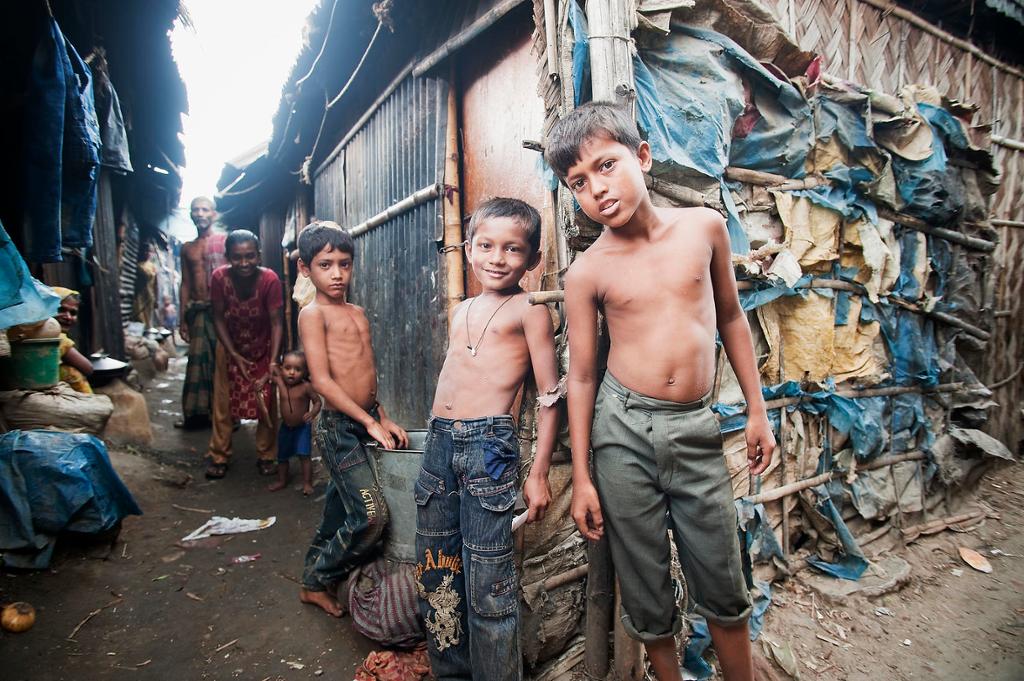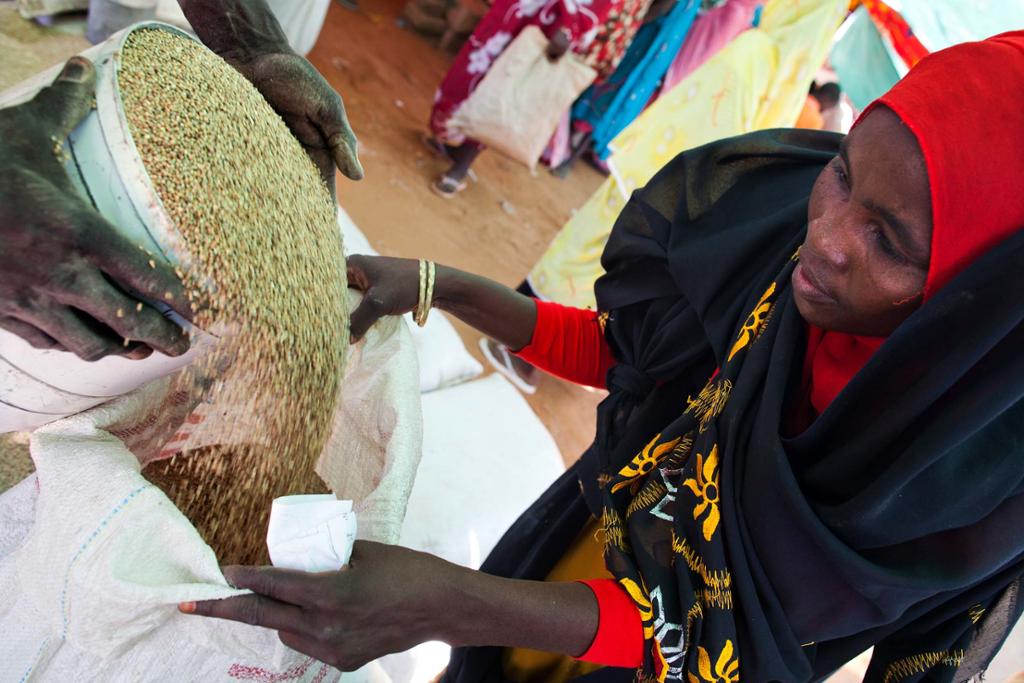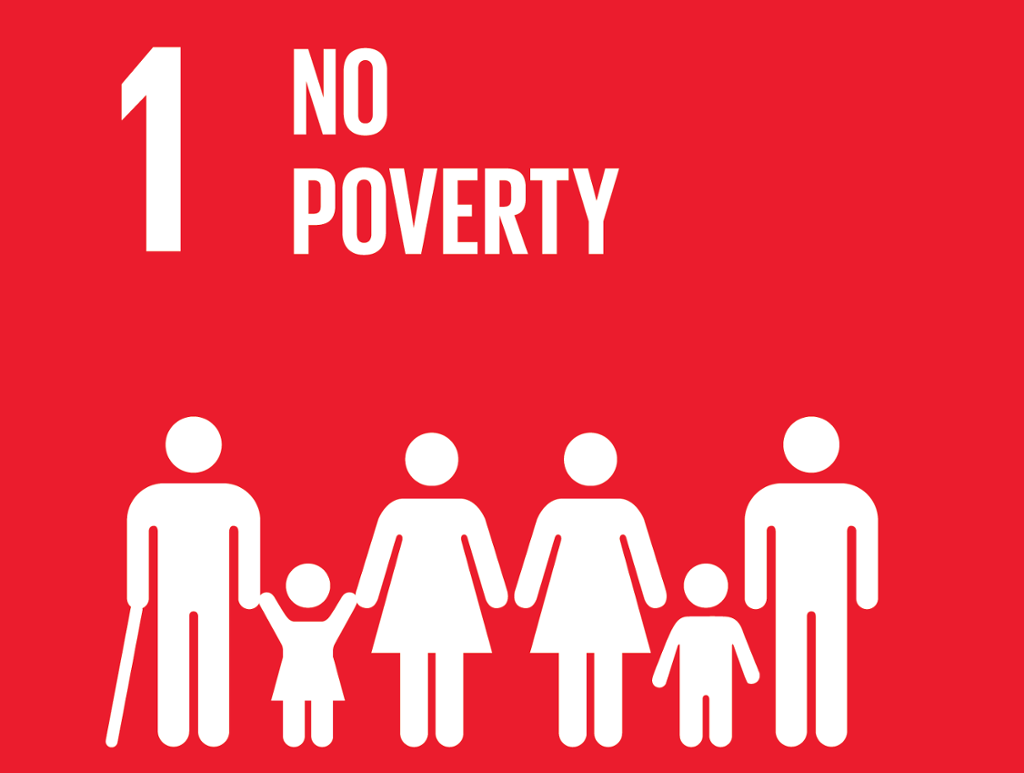Poverty

Poverty
When we talk about poverty we usually differentiate between absolute poverty and relative poverty. When defining absolute poverty, we look at the essentials that people need to live: food, clothing, shelter. Anyone who cannot afford these essentials is considered to be poor regardless of what other people in the country have. Relative poverty means that you have considerably lower income than the average in the society you live in, which means that you have to go without things that other people take for granted.
Where do we draw the line between having an acceptable income and being poor? Countries around the world are different, and it is not possible to simply draw a universal poverty line and say that anyone below it is poor. For example, in Ethiopia the median per capita income is 2 010 Purchasing Power Parity dollars, or PPP dollars. In Norway the median per capita income is 68 310 PPP dollars. The definitions of what it means to be poor has to be adjusted for the various countries around the world.
Living in absolute poverty is a question of life and death. Every day is a struggle to find enough food to eat, clothes to wear, and a safe place to stay. Other terms for this kind of poverty are extreme poverty, deep poverty, abject poverty, destitution, and penury.
Absolute poverty is commonly found in what used to be called developing nations, which today are usually referred to as low income countries. Absolute poverty is often caused by natural disasters, unrest, and war. Many international aid organisations work to help those who live in absolute poverty. Helping people in extreme poverty has also been a long-standing goal for the UN.

More common than absolute poverty is relative poverty, which is found all over the world. It is possible to be poor even with a full belly, suitable winter clothes, and a roof over your head. But what exactly do we mean by relative poverty, and how is it measured?
One way to define relative poverty is to look at the median income in a society and define anyone who earns less than 60% of the median income as poor. This method is flawed because it does not take into account variables such as savings, housing costs, support systems, etc.
If you earn 60% of the median income, but you get free room and board in your parent's house, you are not in the same situation as a family of four who rent a small apartment in London. If you have to travel to work, that will put more of a strain on your budget than if you can walk. If you have an illness that requires medication and regular visits to the doctor, you have expenses and challenges that a healthy person does not have. There are many factors besides income that come into play when calculating poverty.
When we define relative poverty, we establish a poverty line by looking at the resources people have and compare that to what everyone else has. In Norway we may look at things like being able to afford to send your child to their classmates' birthday parties, being able to participate in activities like sport or marching band, having a smartphone, being able to afford a TV subscription, being able to take a holiday, or being able to handle unforeseen expenses without having to go without life essentials.
When people live in relative poverty, it often goes unnoticed by people around them. There is also a perceived stigma attached to being poor, so many try to hide it. Living in poverty creates many big and small challenges every day. Let's look at the example of an invitation to a classmate's birthday party: while an invitation to a birthday party is merely a passing worry to remember to stop by a toy store for most parents, for parents who are poor it is about deciding where the budget can be cut in order for your child to be able to attend the party at all. Is there an added cost of bus fare to get to the party? Does the child have clothes suitable to go to a party? How much must be spent on a present? Will attending the birthday party mean that the family has to skip dinner for a day or two? For many the solution is to stay home, with the consequences this has for establishing friendships and being part of a social group.
Our example may seem trivial but multiplied by any number of similar big and small worries it adds up to a challenging way to live. What happens if the washing machine breaks down – will you be able to repair it? Can you afford the cost of a travel card, or do you walk? Can you afford fresh vegetables and fruit, or do you buy something more filling? Can you afford to go to the dentist with a toothache? What if the rent is increased, do you have to move? Can you get by without a smartphone when you are even expected to pay for the bus with an app? You have been feeling under the weather for some time, but can you afford a trip to the doctor? Will the family be able to afford both presents and food for Christmas? The many challenges and worries that are part of living in poverty can lead to both physical and mental health problems.

The UN's first sustainable development goal is to end all forms of poverty. For years the world saw a reduction in poverty: the number of people living in extreme poverty was reduced from 36% in 1990, to 10% in 2015. The 2020 COVID-19 pandemic had serious consequences for the global economy. The UN estimates that 71 million people were pushed into extreme poverty as a result of the pandemic. In the fact box below you can read what the UN has written about the goal to end poverty.
Related content
Task that challenges you to make a better world.
An article that seeks to highlight some of the issues related to poverty in the UK.